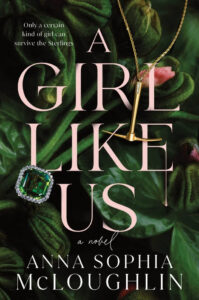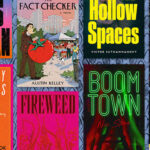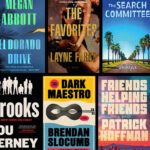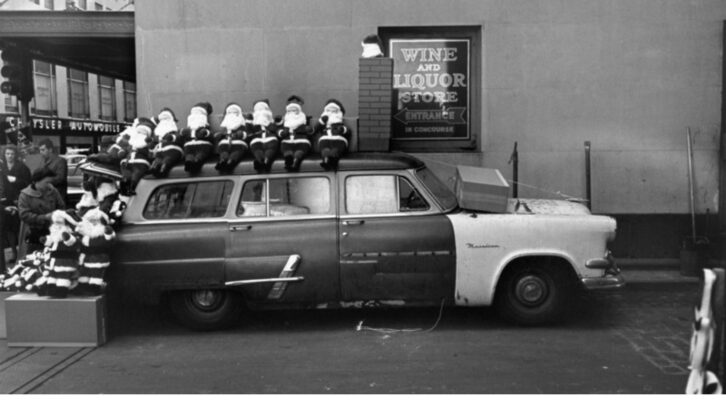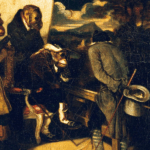In my creative writing classroom, I often fall back on that phrase attributed to the great Jim Thompson, “There is only one plot–things are not what they seem.” But my own personal canon might be better summed up by those oft quoted lines toward the end of Gatsby, “They were careless people, Tom and Daisy–they smashed up things and creatures and then retreated back into their money or their vast carelessness, or whatever it was that kept them together, and let other people clean up the mess they had made…” I mean, there is a plot. Maybe because it was and still seems to be the standard of the tenth grade English curriculum in this country, the Gatsby trifecta remains formative for me–spectacular displays of wealth, class rage, and sensational murder. Oh, and of course, a grand house as a crucial plot point.
A Girl Like Us came out of a moment when I was trying to figure out what to do with my sense of loss after the series finale of Succession (I am being glib but also, you know, kind of serious). I figured I could put a little of that filthy rich family drama into some sort of locked door mystery. My first point of inspiration wasn’t a book at all, but the Robert Altman film Gosford Park. Always a good sign, that—the title is the name of the haunted house. (See also: Brideshead Revisited.) Gosford Park is both a sendup of an English country house murder story and typical Altman– the murmurs of an improbable number of cast members blend into a kind of auditory fog from which a stunning Clive Owen emerges, at once righteous and rather beastly. There is the glorious Maggie Smith, pettily complaining about unsatisfactory marmalade. Everyone has an angle, everyone is complicit in the rotten system; you tug a thread, and a deep history of intimate crimes unravels from the grand tapestries. That got me excited about developing the Sterling family, an intimidating British lineage with an aristocratic aura and modern geopolitical influence–I got to stuff their closets with effed up skeletons.
I wanted the big initial question for readers of A Girl Like Us to be, as the title suggests, what kind of character are we following? Who is our protagonist, our point of entry into this claustrophobically historied world of the wealthy? I wanted her to be striking, a bit of a mystery, but also relatable. Here I was probably drawing on another classic of sensational murder: The Secret History. I assume every novelist would liked to have written this one, at least any novelist I want to read; that particular mix of intellectual ambition, money trouble and deadly aspiration is the sweet spot I am always hoping to achieve. But the narrative is compelling because it is told in that voice of the outsider, a commoner with expensive taste, who by some combination of luck and cunning finds themselves in an inner sanctum. That’s the kind of protagonist I wanted to create in Maya Miller– that sneaky little social climber we are all secretly rooting for.
Making Maya a former reality TV star of that Y2K boom era of reality shows felt like the perfect vehicle to play with what’s true, what’s fake, to create intrigue about what’s beneath the celebrity weekly surface. I must also have been thinking of The Two Mrs. Grenvilles, a Dominick Dunne novel I found in trashy paperback form on a stoop in Brooklyn one day many years ago (when I was probably trying to read or write something tedious and serious) and inhaled. It is the retelling of a tabloid murder of another era–Demi Moore played the real life socialite on whom Dunne’s story is based in Capote vs. The Swans–and follows a showgirl (a showgirl, of all things!) causing a wealthy and socially prominent mother-in-law much agita.
Maybe it is the hungry little cab driver’s daughter in me, but I love that story and I will read it over and over– the interloper who upends the comfortable lives of those who would assert their superiority with pretty manners while behind closed doors they hoard their blood money. I want to root for the heroine who looks after herself and lets the chips fall where they may. Which brings me to Dominick Dunne’s sister-in-law, Joan Didion, another formative writer for me, whose takeaway from Gatsby was not that we can’t repeat the past, or that the American dream is a hoax, but rather that the “incurably dishonest” Jordan Baker is the one with the self respect. “With that genius for accommodation more often seen in women than in men,” Didion wrote, “Jordan took her own measure, made her own peace, avoided threats to that peace: ‘I hate careless people,’ she told Nick Carraway. ‘It takes two to make an accident.’” She’s the one who walks away. Thrilling.
Once I had Maya figured out, I thought all I had to do was throw her into the den of vipers that is the Sterling family like a kernel in a popcorn machine and watch it go. But in any good locked door mystery, the contained setting becomes a crucial force in the story, and I kept feeling that the Sterlings’ ancestral home could come alive even more. How could I allow the history of the home itself to create more of a call and response with the front story mystery? For this, I turned to gothic classics Rebecca and Jane Eyre. I needed not just the dark, descriptive texture of the mansion and clues embedded within its walls, but vestiges of a young woman who had lived there before. This is how the diary entries of the recently murdered young heiress, Arianna, emerged. Infusing the book with a sense of Arianna’s secrets–the lies and manipulations she witnessed and experienced in this very home as a child–finally made the manuscript sing. She was a delicious character to write, and I ended up finding myself wanting to know not just whether Maya was a gold-digger or a “girl like us” but what kind of girl Arianna was. I wanted readers to go on the same journey of making those decisions for themselves about who to trust and what to think of these two women who might be mirrors of each other. Both are women who, no matter what, are determined to have the last word. Once I started writing in Arianna’s voice, I found she wanted to talk and talk and talk…
And actually as I’m writing this, I am recalling a detail from an Agatha Christie I must have read years ago and largely forgotten. The book–Sleeping Murder–involves a woman uncovering her own secret history when a renovation of her new house reveals a wallpaper she distinctly remembers from her childhood. Wallpaper as plot point–that is my kind of thriller, the kind of book I tried to make with A Girl Like Us.
***


